Paris in the 1920s is such a glamorously evocative concept … You can’t help but think Ernest Hemingway and highballs, Josephine Baker and dances of wild abandon, Coco Chanel and beaded black party frocks, avant-garde artists and smouldering muses … And, most of all, fun — crazy-mad fun. Paris didn’t call these years les années folles for nothing!

If only it were as easy to revisit Paris of the 1920s as it is for Gil Pender in Midnight in Paris …

You could always sit around the Saint-Étienne-du-Mont steps, and try your luck as the clock strikes minuit …

Or you could check out the below establishments … Sure, you won’t bump into the Fitzgeralds and get swept along to a soirée starring Cole Porter tinkering away at the ivories … But you’re still guaranteed to get a glimpse into how Paris partied a century ago, and make yourself some good old-fashioned whoopee. Read on for the bee’s knees of 1920s Paris tours …
Montparnasse
Along the Boulevard du Montparnasse you’ll find a cluster of addresses that just happened to be at the very epicentre of the cultural zeitgeist in the 1920s. The world’s most cutting-edge artists, dancers and models, authors and journalists … all blended together like the most sparkling and potent of cocktails — and it was in fact here that Parisians first got the taste for le cocktail, imported by the countless Americans flocking to Paris, and to Montparnasse, to escape Prohibition back home. Here’s where to have un cocktail in tribute:
La Rotonde (no.105): Amid the gilded ruby splendour, this was where F.Scott and Zelda danced and drank, and Henry Miller declared his love for Anaïs Nin. If the scene is a little less frenetic these days, it remains the perfect spot for an apéro, particularly a kir royal with its complementary rosy sparkle.
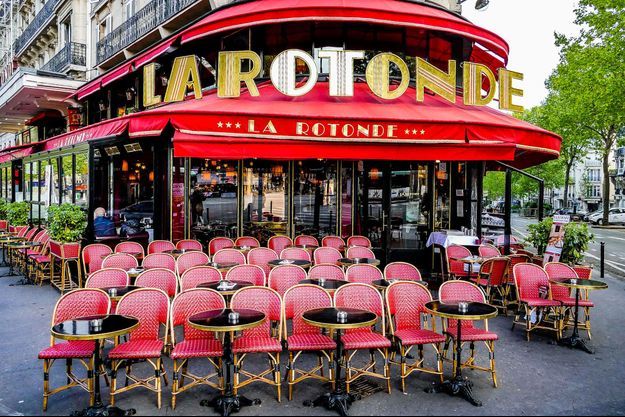

Le Select (no.99): In The Sun Also Rises, Ernest Hemingway’s 1926 novel about party-hard post-war Paris, lead character Jake Barnes prefers this bar, probably because it was the first of the Montparnasse cafés to stay open all night. It’s still a good go-to for traditional cocktails, but you can also line your stomach well here; Le Select is one of those Parisian eateries that dish up French comfort food with a side serve of nostalgia — onion soup, omelette, egg mayo, and the like. The original golden-brown 1923 interior remains warm and inviting.


La Coupole (no.102): This mega-brasserie might not be as hopping as it was back in 1927, when Josephine Baker shimmied up a storm here, but the expansive Art Deco space — featuring columns painted by Chagall and Brancusi — still fills with locals and tourists alike, lured by the glamour and heritage of this officially-listed ‘historical monument.’ If you’re not up for a meal, head to its ‘Bar Américain’ for a refreshment — it was one of the first such bars in Paris and remains an institution.

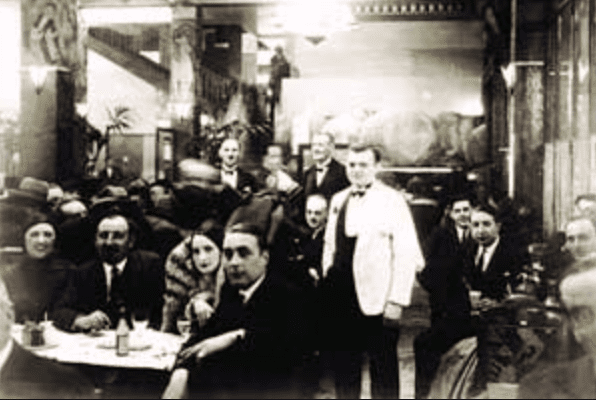
La Closerie des Lilas (no.171): Originally a village-like café, La Closerie des Lilas was a favourite of the area’s bohemian artists, and still had a bucolic air about it when Hemingway made its peaceful terrace his favourite writing spot, far from the madding crowd of Carrefour Vavin (the crossroads where the above three, along with Le Dôme, are found). The author grumbled when the café transformed itself into an American bar in the mid 1920s. The Deco cocktail lounge is still there, so venture through the leafy bower of an entrance, into the cosy piano bar, with its amber glow and glossy banquettes, and order yourself … perhaps a French Martini? It seems a very Hemingway-in-Paris thing to drink, non?


Museums
There’s no one single Paris museum devoted to displaying the artistic mood of the Crazy Years, but at the Musée d’Art Moderne you’ll find works of some of the city’s most celebrated artists of the era: the Delaunays, Amedeo Modigliani, Georges Braque, Marc Chagall …
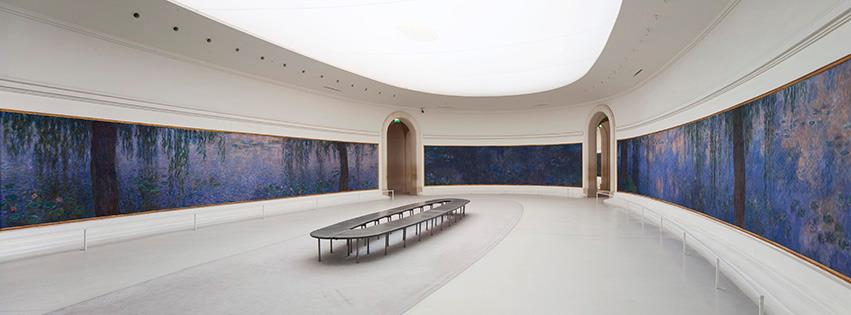
The Musée de l’Orangerie also exhibits works by Modigliani, along with masterpieces by Henri Matisse, the dreamy visions of Marie Laurencin and, of course, Claude Monet’s epic Water Lilies Cycle, displayed exquisitely here (above) since 1927. Like Monet, Pablo Picasso continued to be an art superstar in the twenties; if you’re a fan, don’t miss a visit to the Musée Picasso.
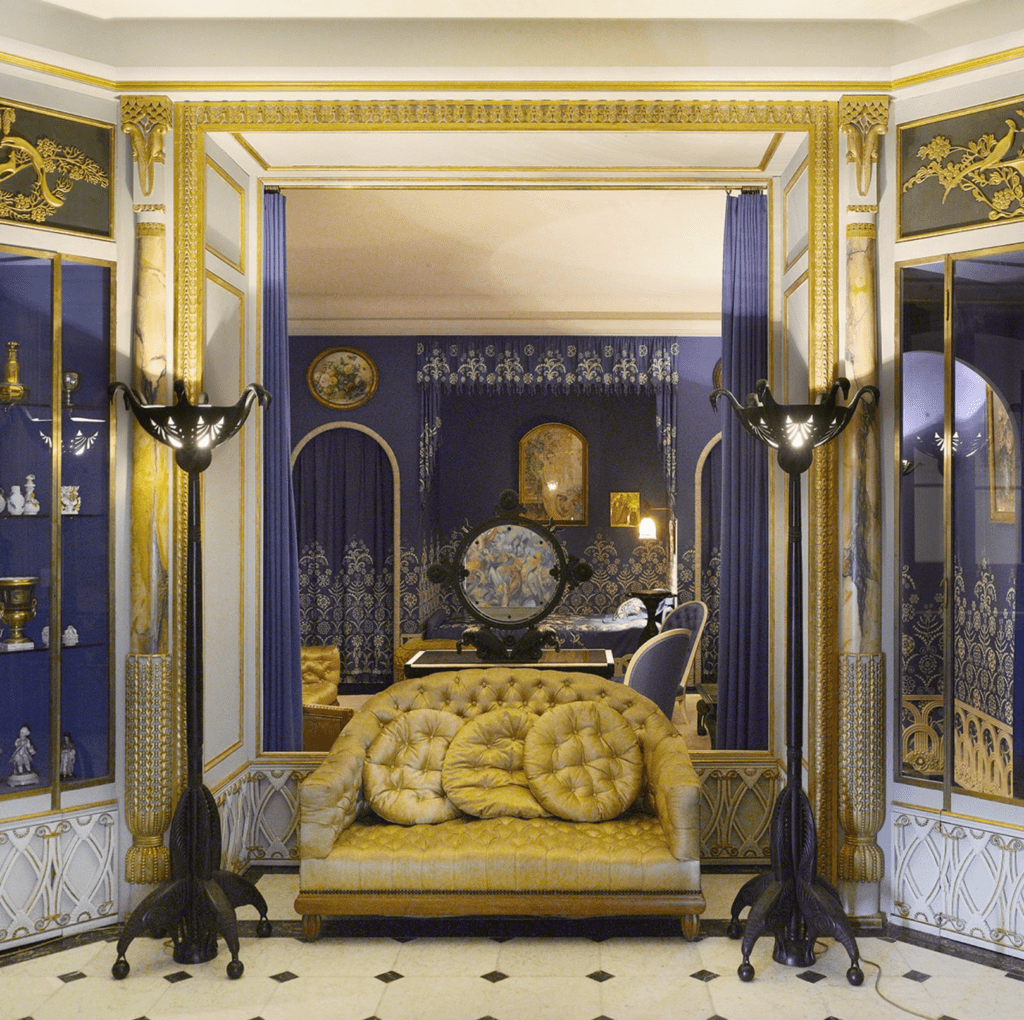
For a showcase of how Parisians lived in the 1920s (well, the glamorous ones, at least), head to the Musée des Arts Décoratifs, where a star exhibit is the recreated private apartment of designer Jeanne Lanvin (above) — all lashings of ‘Lanvin blue,’ luxurious splashes of gold, and sleek neo-Classical touches. Also wander through the Art Deco rooms; Art Deco, by the way, was so named after the 1925 Exposition des Arts Décoratifs in Paris, which wowed the world with its modern and streamlined new take on inner and outer architecture. Speaking of which …
Architecture

Swiss-born architect Le Corbusier hit his career stride in Paris in the 1920s, when he started to challenge and then change the way the world lived, with an emphasis on space and concrete. You can visit one of his first purist white villas out west in the 16th arrondissement; built in the early 1920s for a wealthy art collector, it is now Fondation Le Corbusier (above). His influence, however, was more felt outside of Paris, which has remained mostly classically Haussmannian. (And fortunately, Le Corbusier’s vision for a future City of Light, one that would knock down swathes of the historic Right Bank to make way for skyscrapers and expressways — his ‘Plan Voisin,’ unveiled at the 1925 expo — would never materialise).

A very different example of 1920s architecture can be found over to the east of Paris. La Grande Mosquée de Paris was a gift from the French government to the Muslim community, which had lost more than 100,000 soldiers who had fought for France in WWI. The Hispano-Moorish-style mosque is, fittingly, a beautiful call for peace, with its delicate minaret, paradisiacal gardens of palms, roses and wisteria (above), its series of calm courtyards, all exquisitely marbled and tiled, and its gorgeously fragrant tearooms.
Theatres & Clubs
Parisians fell in love with African-American jazz in the 1920s (le jazz hot, they called it), and even harder for Josephine Baker when she burst onto the city’s cultural stage in 1925. A star of the Harlem musical show La Revue Nègre, Baker wore nothing but a strategically positioned pink flamingo feather, and danced deliriously to the thumping jazz beat.
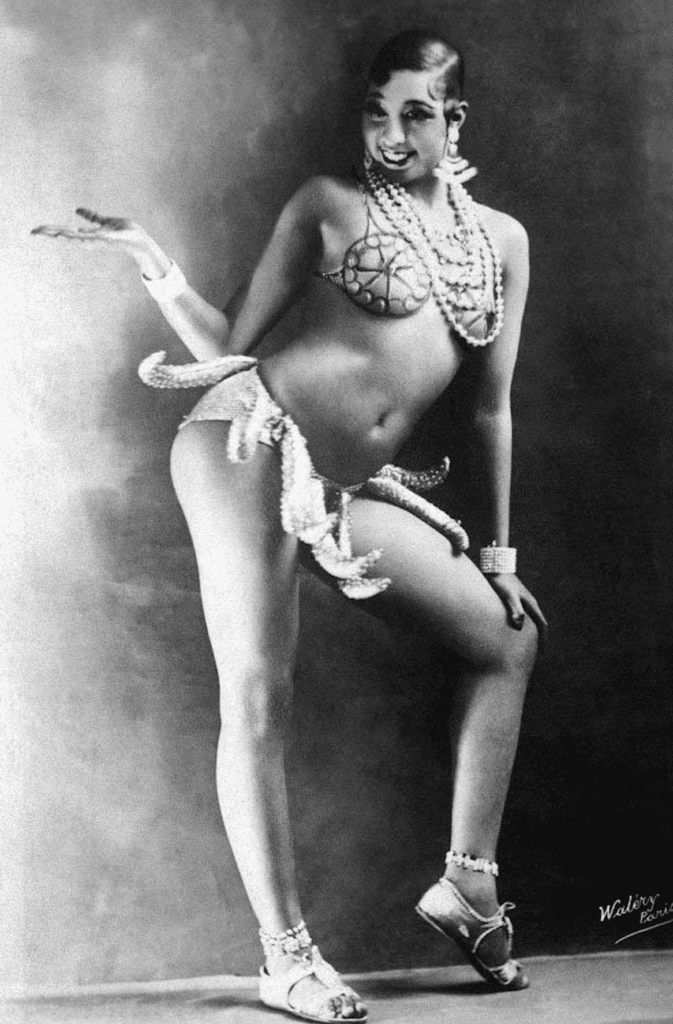
You can still listen to old-school jazz alongside the very ghost of Josephine Baker at Le Bal Blomet; Baker bopped away here in the 1920s along with those ever-present partiers the Fitzgeralds, Hemingway, Man Ray and Kiki de Montparnasse. Or you could go see a show at the cabaret music hall Folies Bergère where in 1927 Baker danced in a now-infamous banana skirt (above). Little might shock these days, but the upcoming Dita Von Teese show is sure to be glamorously risqué — and it’s also worth going for the décor alone …
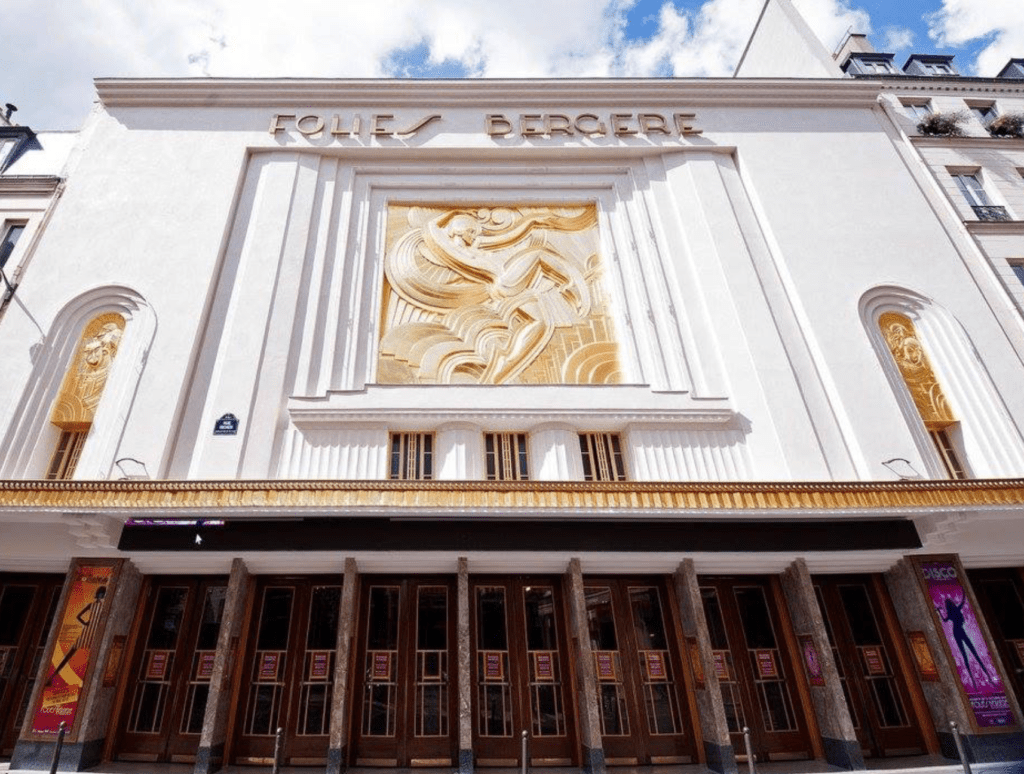
Behind the Art Déco façade (above) — added in 1926 — is a Belle Époque interior that will make you swoon for its sumptuousness:
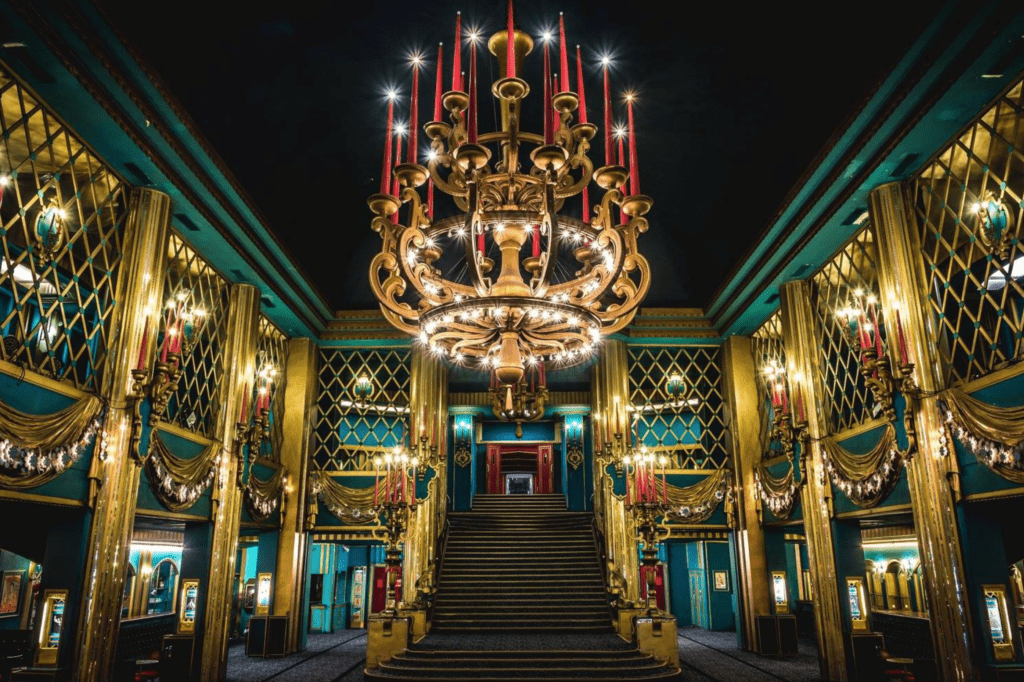
For a more immersive Art Deco interior experience, watch a movie at the Louxor Palais du Cinema. (If you don’t speak French, look for an English-language film marked VOST, which indicates it’s in the original voice and sub-titled.)
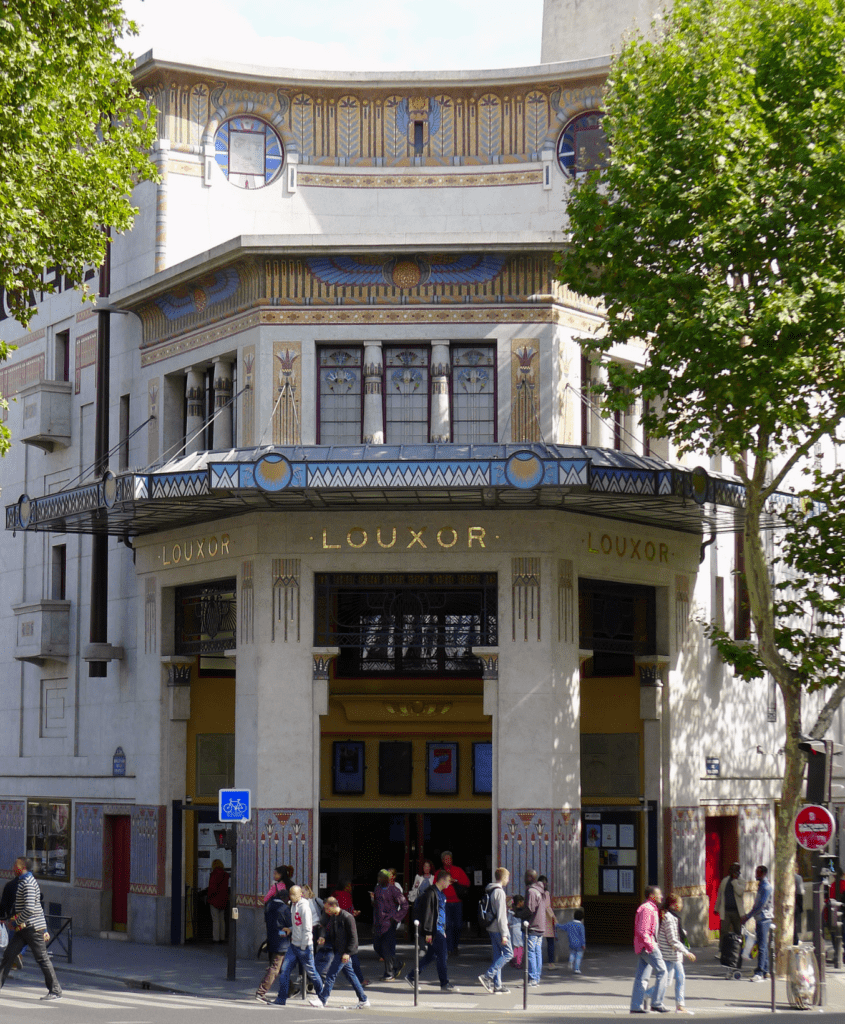
Dating from 1921, when the trend for Egyptomania was starting to peak, the Louxor has recently been renovated to its former movie-star-like glory — it looks like something you might see in a movie, with its antiquity-inspired architecture, brilliance of golden flecks and bright mosaics, and general Cleopatra-esque fabulousness.

Chanel
Coco Chanel was the it woman of the era, defining the style of the decade with her bobbed hair, little black dresses and ropes of pearls. She set up shop on Rue Cambon just after WWI, and her success was such that, during the 1920s, she was able to snap up a number of buildings along that street. No.31 remains the Chanel flagship, but there’s a newer boutique just down the street, at the corner of Rue Saint-Honoré:

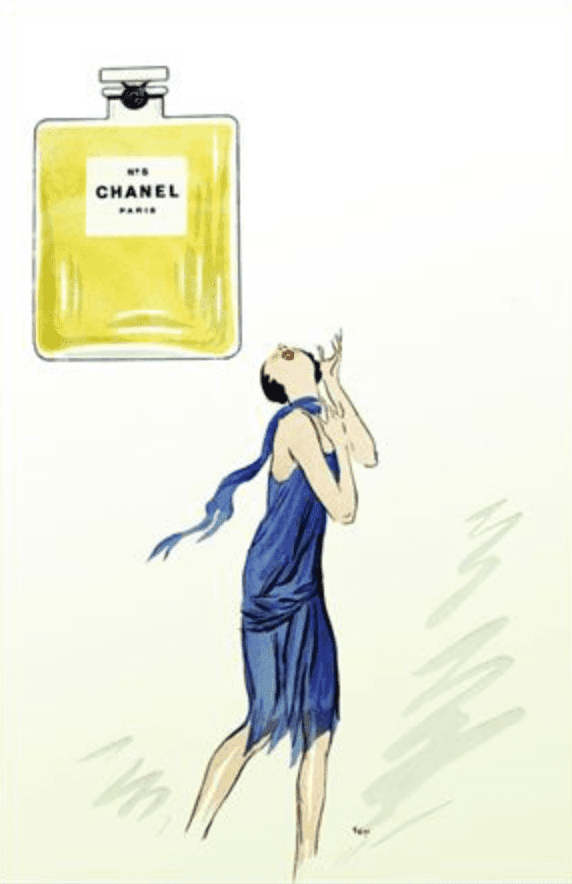
If your budget doesn’t quite stretch to an LBD, you could always channel Coco’s original spirit by buying a bottle of Chanel No.5; the 1921 abstract-floral fragrance was so immediately and phenomenally popular, it’s no less than the quintessential scent of 1920s Paris.

